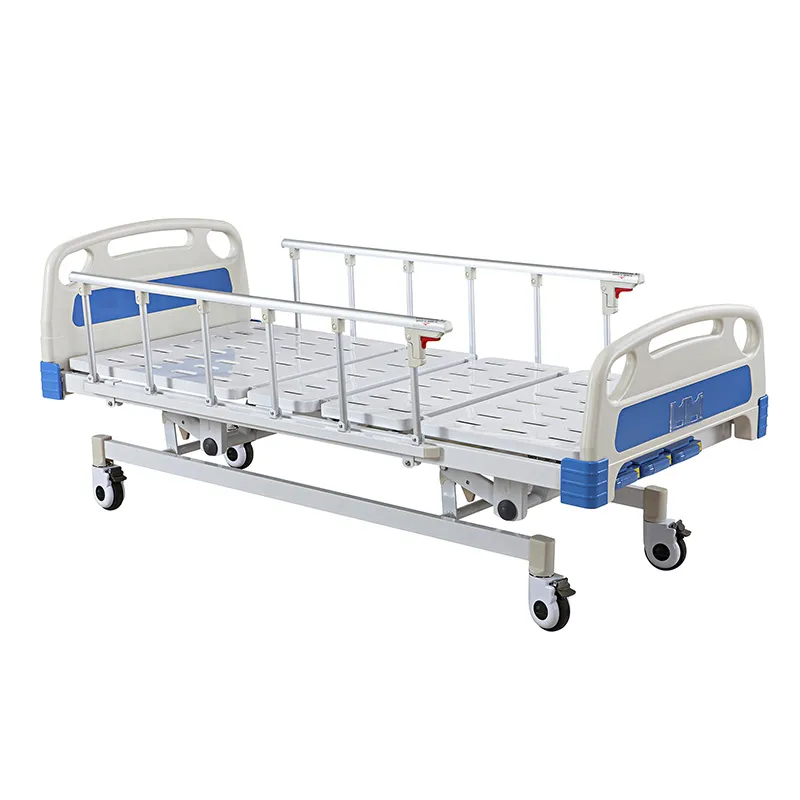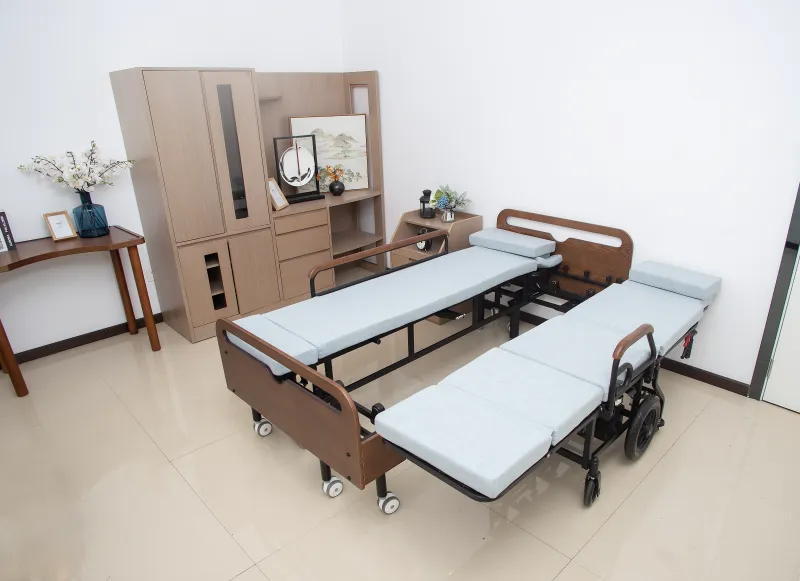
Why do hospital beds have to be tilted at a certain angle?
2024-06-14 15:30
Hospital patient beds play a vital role in medical care, but why do they have to be tilted at a certain angle? This article will explore the reasons why hospital beds are tilted, and explain and explore from multiple angles to help readers better understand the significance and role of hospital bed tilt.

Why do hospital beds have to be tilted at a certain angle?
Hospital beds are tilted at a certain angle to meet the needs of medical care and patient comfort. This tilt can help prevent pressure sores, improve airway patency, promote digestion, and relieve specific symptoms. By adjusting the angle of the bed, medical staff can provide medical care more effectively while allowing patients to feel a more comfortable environment, promoting recovery and comfort.
1. The role of the tilt angle:
Hospital patient beds can usually be adjusted to different tilt angles to meet the needs of different patients and treatment plans. The appropriate tilt angle can help patients improve blood circulation, reduce pressure, prevent the occurrence of pressure sores, and reduce the risk of airway obstruction.
2. Prevention of pressure sores:
Adjusting the bed to the appropriate tilt angle helps to disperse the pressure on the patient's body and reduce the risk of pressure sores caused by prolonged pressure on specific parts. This is especially important for patients who have been bedridden for a long time, which can effectively reduce the incidence of pressure sores and improve the comfort and recovery speed of patients.
3. Improve airway patency:
The appropriate bed tilt angle can promote the patient's airway patency, especially for patients with respiratory diseases or who need respiratory support. By raising the head or adjusting the body position, airway obstruction can be reduced, gas exchange can be improved, and the patient's oxygen supply and breathing comfort can be improved.
4. Promote digestion and relieve symptoms:
The appropriate bed tilt angle can also help promote the function of the digestive system and reduce problems such as indigestion and acid reflux. In addition, for specific symptoms such as chest tightness, edema, etc., adjusting the bed angle can also provide some relief and comfort.
How and why does the hospital patient bed tilt?
The hospital patient bed can be tilted by adjusting the bed angle. This tilt is usually achieved through an electric or manual control system, which can achieve the lifting and tilting of the head or foot of the bed. Tilting the bed can help patients improve airway patency, which is especially important for patients with breathing difficulties. In addition, tilting the bed can also promote digestion, relieve stomach discomfort, and help prevent the formation of pressure sores.
1. Manual adjustment mechanism:
Some hospital patient beds are equipped with a manual adjustment mechanism, which can be manually adjusted by the patient or caregiver. Usually, this mechanism involves turning a handle or pressing a button to change the angle of the bed frame to achieve the tilting effect. This method is simple and easy to use and is suitable for most basic tilting needs.
2. Electric adjustment system:
Some advanced hospital patient beds are equipped with an electric adjustment system, which can achieve precise adjustment of the bed through a remote control or control panel. This system can achieve a wider range and finer tilt angle adjustment, and the operation is more convenient and quick. The electric adjustment system can also be integrated with other medical equipment and monitoring systems to achieve more comprehensive medical care.

What is the adjustment range of the hospital bed tilt angle?
The hospital patient bed can usually adjust the tilt angle range between 0° and 60°, depending on the design and model of the bed frame. In actual use, medical staff will determine the most suitable tilt angle according to the patient's specific situation and treatment needs, and make corresponding adjustments and monitoring.
In order to ensure the safe and effective adjustment of the bed tilt angle, hospitals usually provide relevant training and guidance to medical staff. They need to understand the impact of different bed tilt angles on patients, master the operation methods of the adjustment mechanism, and reasonably adjust the bed angle according to the patient's condition and treatment plan to ensure the quality and effectiveness of medical care.
Does the adjustment of the hospital bed tilt angle require professional knowledge?
Adjusting the tilt angle of a hospital patient bed usually requires certain professional knowledge and skills. First, medical staff need to understand the patient's condition and medical needs to determine the most appropriate bed angle. Secondly, they need to be familiar with the operation methods and control devices of hospital beds to ensure that the bed angle is adjusted correctly and avoid operating errors.
In addition, they also need to work closely with other medical personnel, such as doctors, physical therapists, etc., to jointly develop and implement personalized medical care plans. Finally, they need to continuously learn and update relevant knowledge and skills to keep up with the development and changes of medical technology and improve the quality and efficiency of medical care.
Summary:
The adjustment of the hospital patient bed tilt angle is crucial to the patient's rehabilitation and comfort. By reasonably adjusting the bed angle, pressure sores can be prevented, respiratory and digestive functions can be improved, pain and discomfort can be relieved, and the patient's rehabilitation efficiency and quality of life can be improved. Medical staff need to master the operation methods of different regulatory mechanisms and make personalized adjustments according to the specific circumstances of the patients to ensure the safe and effective implementation of medical care.








